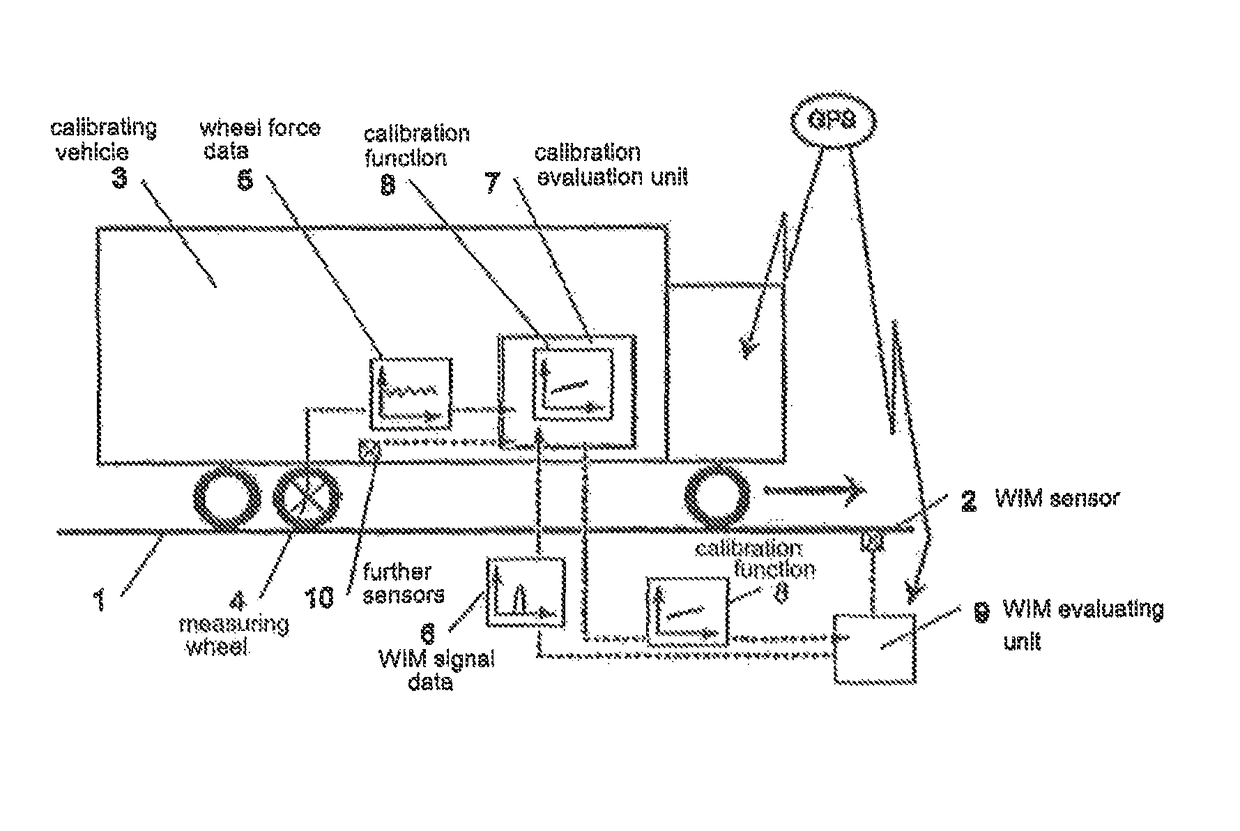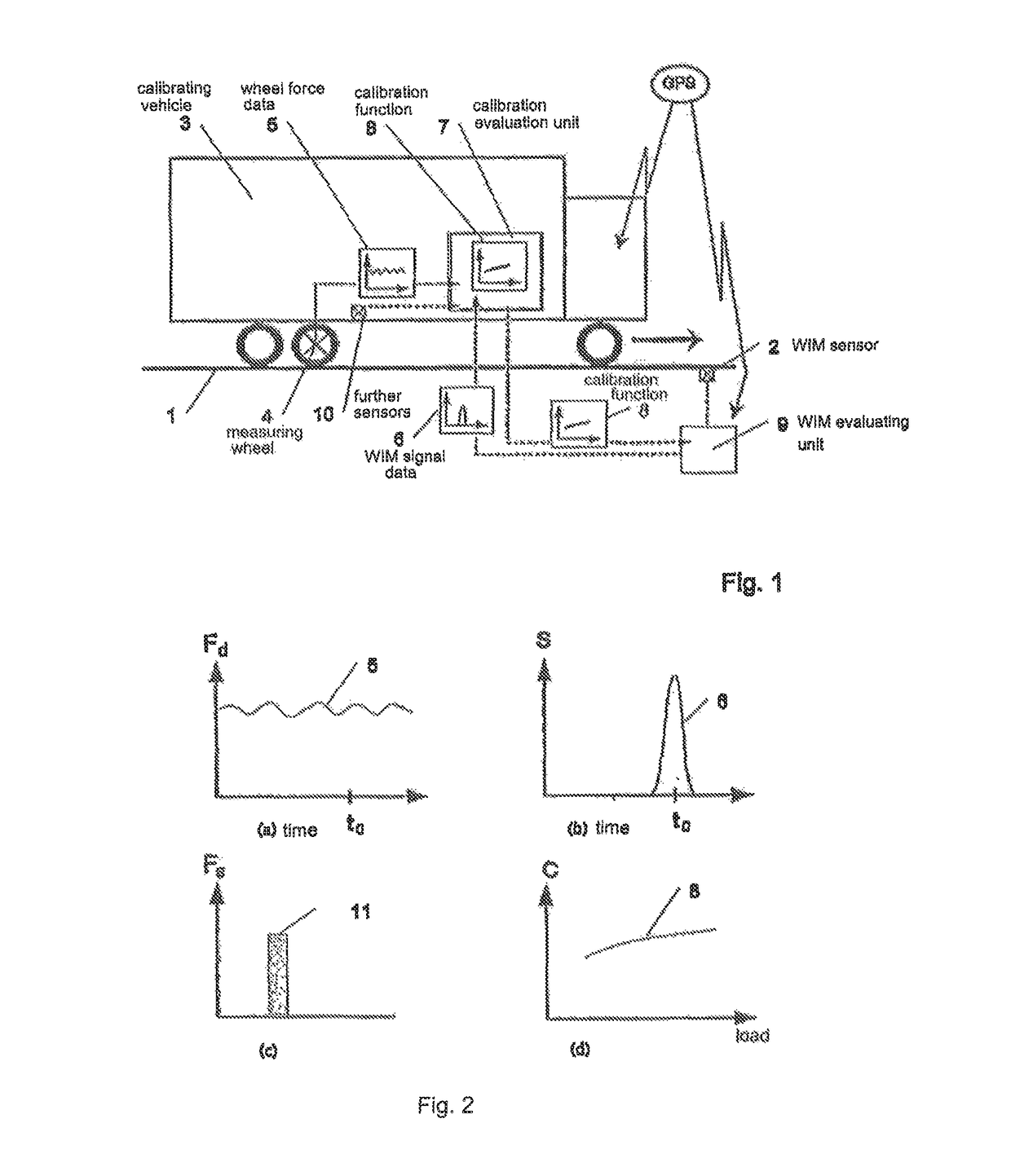Method for calibrating WIM-sensors
a sensor and wim technology, applied in the field of calibration methods of wim sensors, can solve the problems of affecting the accuracy of the weighing machine, the condition of the springs also occurs, and the aerodynamics of the vehicle, so as to achieve the effect of greater accuracy and easy and fast carrying ou
- Summary
- Abstract
- Description
- Claims
- Application Information
AI Technical Summary
Benefits of technology
Problems solved by technology
Method used
Image
Examples
Embodiment Construction
[0015]FIG. 1 shows a road 1 with a WIM sensor 2 (Weigh in Motion) built therein, said WIM sensor being connected to a WIM evaluating unit 9. A calibrating vehicle 3 is represented on road 1, here in the form of a lorry. The arrow direction indicates the driving direction of calibrating vehicle 3.
[0016]WIM sensor 2 in each case measures dynamic signal S of a vehicle 3 as it passes over, and this measurement is schematically represented in FIG. 1 as time-dependent WIM signal data 6. After the measurement, said data are relayed to WIM evaluating unit 9 and are amplified there if need be, evaluated and / or processed in another form.
[0017]At least one of the wheels of calibrating vehicle 3 is fitted with a measuring wheel 4, which permits the dynamic wheel force, which is acting in each case on the road or on the WIM sensor, to be ascertained during travel. These wheel force data 5 can be measured time- or location-dependent. These data 5 can also be amplified, evaluated and / or processed ...
PUM
 Login to View More
Login to View More Abstract
Description
Claims
Application Information
 Login to View More
Login to View More - R&D
- Intellectual Property
- Life Sciences
- Materials
- Tech Scout
- Unparalleled Data Quality
- Higher Quality Content
- 60% Fewer Hallucinations
Browse by: Latest US Patents, China's latest patents, Technical Efficacy Thesaurus, Application Domain, Technology Topic, Popular Technical Reports.
© 2025 PatSnap. All rights reserved.Legal|Privacy policy|Modern Slavery Act Transparency Statement|Sitemap|About US| Contact US: help@patsnap.com


